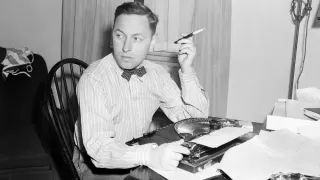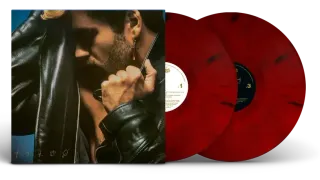October 5, 2021
NYC Celebrates LGBTQ History Month with a Curated Collection of Historic Sites
READ TIME: 6 MIN.
New York City celebrates LGBT History Month with a collection of themes that highlight the city's vibrant, longstanding community.
Curated by the NYC LGBT Historic Sites Project, 30 themes – each with multiple points of interest – uncover the places, organizations, and events that contributed to LGTBQ+ history as we now know it.
This overview looks at only half a dozen of the most exciting themes on offer.
Bars & Nightlife
Totaling nearly two dozen sites, most of them in Manhattan, this theme focuses on how "bars and other establishments played a pivotal role throughout the 20th century – but particularly in the pre-Stonewall era – as centers for LGBT activism and community," text at the NYC LGBT Historic Sites Project website notes.
"These spaces," the site goes on to say, "gave LGBT people the freedom to be themselves in a way they usually could not be in their personal or professional lives." (This collection might pair well with the Early Community Centers curated list.)
The spaces curated here run the diversity gamut, from the Bum Bum Bar (pronounced Boom Boom"), which operated through the 1990s until 2018 and which "catered to a predominately Latina lesbian clientele in Queens," to the Hudson River waterfront leather bar Ramrod, to the legendary Studio 54, which drew inspiration from the city's gay nightspots and became "one of the world's most famous discos with a fusion of gay, bisexual, and straight patrons."
Why We March
The Stonewall Uprising was only one notable inflection point in a civil rights struggle that was already underway in June of 1969 and continues to this day. New York City has seen its share of protests and marches focused on pushing back against attempts to keep the LGBTQ+ community locked in the closet.
"Reflecting the importance of such events, scholars have agreed that the first-ever New York City Pride March (held in June 1970) and subsequent annual marches around the country helped solidify the significance of the 1969 Stonewall Uprising in LGBT history," the NYC LGBT Historic Sites Project notes.
Visitors can make their own march –�or pilgrimage – in the name of equality and freedom to the sites of street actions like the Gay Activists Alliance, Gay Liberation Front, and Radicalesbians Demonstration Against Police Harassment at Times Square, which the site recollects was a "peaceful Times Square protest over recent increased police harassment against the LGBT community in the Greenwich Village and Times Square neighborhoods" that took place on an August evening in 1970, before "a riot between the police and protestors in Greenwich Village" broke out.
And then, of course, there's the NYC Pride March, the first of which "was held on Sunday, June 28, 1970 (the one-year anniversary of the Stonewall uprising), and, much to the organizers' surprise, attracted thousands of participants." The event has only grown in scope since then!
Looking for more? Consider the Gay Activists Alliance list.
The Harlem Renaissance
The 13 sites of the
Among many other points of interest, there's also the Apollo Theater, a venue across five decades for "nearly every important African-American entertainer[s]... including many LGBT stars." Something else you won't want to miss: The
To discover more about Black contributions to the LGTBQ+ community in NYC and the world, take a stroll through the Influential Black New Yorkers curated list.
The Theater District
New York has long been celebrated as "a helluva town," with Manhattan and the boroughs inspiring plenty of classic plays, musical and otherwise. Whether you pay a visit to the Jackson Heights-themed destinations or prefer to take in the joys of the Lin-Manuel Miranda musical "In the Heights," a visit to NYC wouldn't be complete without stopping by the Broadway Theater District.
"Throughout the 20th century, the LGBT community has had a significant and disproportionate impact on the Broadway stage, even as the New York Legislature-enacted Wales Padlock Law (1927-1967) made it illegal for theaters to show plays that featured gay and lesbian characters," the NYC LGBT Historic Sites Project recalls.
This is one of the largest themed collections, with 43 historic sites – almost all of them theaters, including the Ed Sullivan Theater, the Brooks Atkinson Theater, the Broadway Theater, and many, many more.
Just can't get enough? Consider the Spotlight on the Theater collection as well, which "spotlights influential live theater venues from downtown Manhattan to Harlem as well as residences of theater notables."
Transgender History
No accounting of LGBTQ+ history could ever be complete without the inclusion of the transgender community and its still-unfolding history of oppression, demonization, and courageous resistance.
"This curated collection features residences, the Christopher Street Pier, and community centers that honor the legacies of pioneering trans activists such as Sylvia Rivera and Marsha P. Johnson and groups such as the Street Transvestite Action Revolutionaries (STAR) and the Fabulous Independent Radicals for Community Empowerment (FIERCE)," the NYC LGBT Historic Sites Project details.
Also featured: The Christine Jorgensen Childhood Residence, where the trailblazing trans pioneer and "Bronx native Christine Jorgensen lived... with her family from her birth in 1926 until the early 1950s."
Then there's the WOW (Women's One World) Café Theatre, also included on this list, has been "one of the premier centers for lesbian, women's, and transgender theater in New York" for over forty years, while the Transy House "provided shelter for trans and gender non-conforming people in need, served as a center for trans activism and was the last residence of pioneering LGBT rights activist Sylvia Rivera" during its 13 years of operation.
Literary Finds
The 18 sites that comprise the Literary NYC collection "explores the homes of LGBT writers, poets, and novelists whose contributions to American literature include beloved children's books, more realistic portrayals of people of color, and LGBT-thematic works" like, the site notes, Patricia Highsmith's "The Price of Salt" (which Todd Haynes turned into the lushly cinematic 2015 film "Carol").
Featured destinations include the Allen Ginsberg & Peter Orlovsky Residence, the Edna St. Vincent Millay Residence, the Maurice Sendak Residence & Studio, and residences for "Raisin in the Sun" playwright Lorraine Hansberry, poet Langston Hughes, and "Giovanni's Room" novelist James Baldwin.
Still thirsty for some high culture or cultured high-jinks? Take a look at the 13 sites of the Downtwon Arts Scene.
If you're ready to take a big gay bite of the ol' Big Apple this LGBT History Month, the NYC LGBT Historic Sites Project is one curated list of splendors you won't want to miss.






